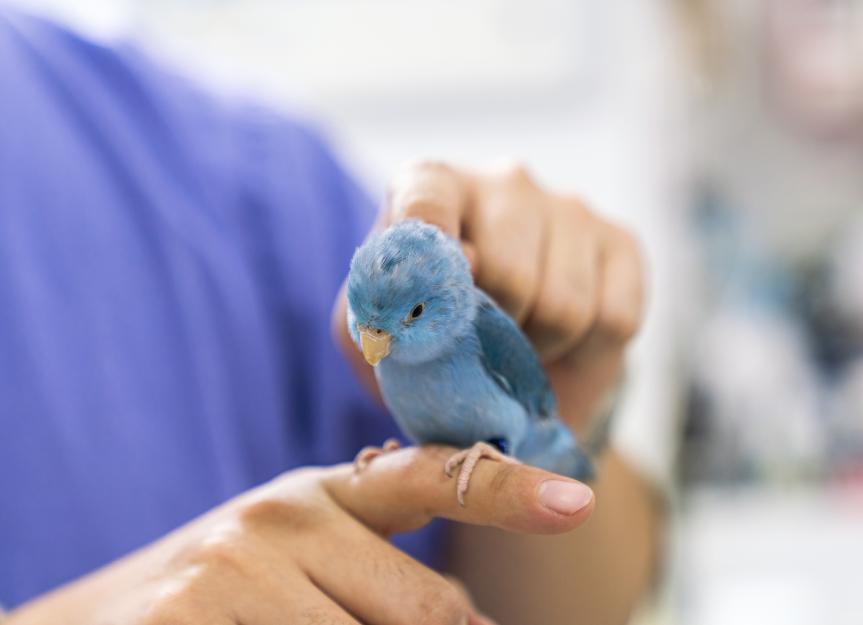- Thread starter
- #321
Beat me too it! Will see what Cotonoid finds on research. But I find its indication of liver/systemic Inflammation .His beak is much lighter in color now.
Its wonderful to see Cotton recovering and thriving
Follow along with the video below to see how to install our site as a web app on your home screen.
Note: This feature may not be available in some browsers.
Beat me too it! Will see what Cotonoid finds on research. But I find its indication of liver/systemic Inflammation .His beak is much lighter in color now.
O wish I knew how to also li k your Cotton update in this! Thank you for sharing his eye photos !Because I had to search so hard for that article.
Here are examples of that in Pikachu
Red hue, sick
View attachment 38085
Normal
View attachment 38086
Its much more subtle in brown eyed birds like Ta-dah. This is her sick, notice tge darkness of her eye, plus the skin around her eye has darkened slightly or you might see a tint of pinkess all the way to red skin in some.
View attachment 38091
Here normal. No its not just the light. I'm not sure if I kept more examples. And the pictures were shared and discussed / confirmed with my avian vet at the time
View attachment 38094
once you have seen in person, you can tell better, the pupils become less distinct

 www.parrotwebsite.com
www.parrotwebsite.com
I just read that when researching baby beak color! I found they are born with light beaks and they darken to adult color with as you mentioned females having darker color beaks.I found the same information; beak discoloration due to inflammation, illness, or malnutrition. Cotton's been dealing with all three! Hopefully he doesn't also have liver issues though.
For African Ringneck beak color differences between male and female - the female does generally have a darker beak.
View attachment 39820
View attachment 39821
(Photo credit - first photo from parrotfeather.com which has the best write up on ARN I found when researching in March; second photo from MajistatAviary.com whose page has one of my favorite ARN photos showing the length of their tail)
I just read that when researching baby beak color! I found they are born with light beaks and they darken to adult color with as you mentioned females having darker color beaks.
So I think was health issues making Cotton beak darker. Chlamydia does cause liver Inflammation. He is young and I don't think has enough time with poor diet to have permanent liver issues. The liver is remarkable regenerative.
Edit; I never see them mention head shape as identifying characteristics between ARN and IRN but I find it very noticeable!
So I can add another beak articleBeak color article, talks about normal color changes with maturity in some species and an indicator of Inflammation and nutrition issues.
As we need every tool possible to pick up health issues in our parrots who will hide illnesses.
From below article
" Whether you have noticed a change in your parrots beak, or you are just curious, this article will discuss why parrots beaks change color, the healthy reasons why this occurs, and some of the possible problems that a change in beak color may be indicating including issues in their diet, damage to the beak, infection, or even aging."

Do Parrots Beaks Change Color? (Find Out!) - Parrot Website
A parrot’s beak is often it’s most notable feature, and among other birds, a parrot’s beak is quite unique. From its prominent hook, to bright color, awww.parrotwebsite.com
More from above article
"
However, beak discoloration could also be caused by an infection.
An infection is recognized by a change in color, or a change in the beaks texture, and your bird’s loss of appetite.
It is much easier to tell if a parrot as an infection if your bird has a light-colored beak because it is clearer to tell.
Brownish or black spots can be an indication of anything from mites, bacterial infection to cancer.
As with most things, if you are worried that your parrot’s beak discoloration may be caused by an infection, mites, or even cancer, always bring them to see a veterinarian. "
 freerangeparrots.com
freerangeparrots.com
Short article on bird respiratory systems that I found interesting:
Are bird respiratory systems really more sensitive? | Free Range Parrots
It’s generally regarded as a fact that birds have very sensitive respiratory systems, far moreso than humans. Much of this comes from the proven sensitivity ...freerangeparrots.com
Thanks for sharing!Short article on bird respiratory systems that I found interesting:
Are bird respiratory systems really more sensitive? | Free Range Parrots
It’s generally regarded as a fact that birds have very sensitive respiratory systems, far moreso than humans. Much of this comes from the proven sensitivity ...freerangeparrots.com
I think what it was trying to say is that toxins aren't necessarily dangerous because they're more "sensitive" but because their respiratory systems are different. So it's just saying that their respiratory system isn't problematic, but rather that they may be more sensitive to certain chemicals than us, and we may be more sensitive to certain chemicals than they are. I think the article is mostly about oral stuff. So what you're saying about chemicals being transmitted through their whole body is correctThanks for sharing!
I think something i did not see covered is surface area. Because birds airsacs extend throughout their body , their hollow bones. Its a huge surface area to have contact with air born toxin plus birds streamlined body mass . So they can get a much higher exposure. Birds are more sensitive to many airborne chemicals and toxins for the above reasons and from my college courses, and researched articles....
I didn't see science backing this ? Just opinion? Maybe I need to re read .. its early for me.
Re read.
"in general, birds are not automatically and predictable more sensitive to orally administered toxicants than comparably sized mammals."
This conclusion says oral! Not inhaled.
I've done a lot of editing to my reply.I think what it was trying to say is that toxins aren't necessarily dangerous because they're more "sensitive" but because their respiratory systems are different. So it's just saying that their respiratory system isn't problematic, but rather that they may be more sensitive to certain chemicals than us, and we may be more sensitive to certain chemicals than they are. I think the article is mostly about oral stuff. So what you're saying about chemicals being transmitted through their whole body is correct
@CottonoidFeathers! In honor of Cotton
( was trying to find the length if time and stages of a single feather growth....not found yet)
But a very interesting article
Development, Regeneration, and Evolution of Feathers - PMC
The feather is a complex ectodermal organ with hierarchical branching patterns. It provides functions in endothermy, communication, and flight. Studies of feather growth, cycling, and health are of fundamental importance to avian biology and poultry ...www.ncbi.nlm.nih.gov

 www.sciencedirect.com
www.sciencedirect.com




 thegwillimproject.com
thegwillimproject.com


